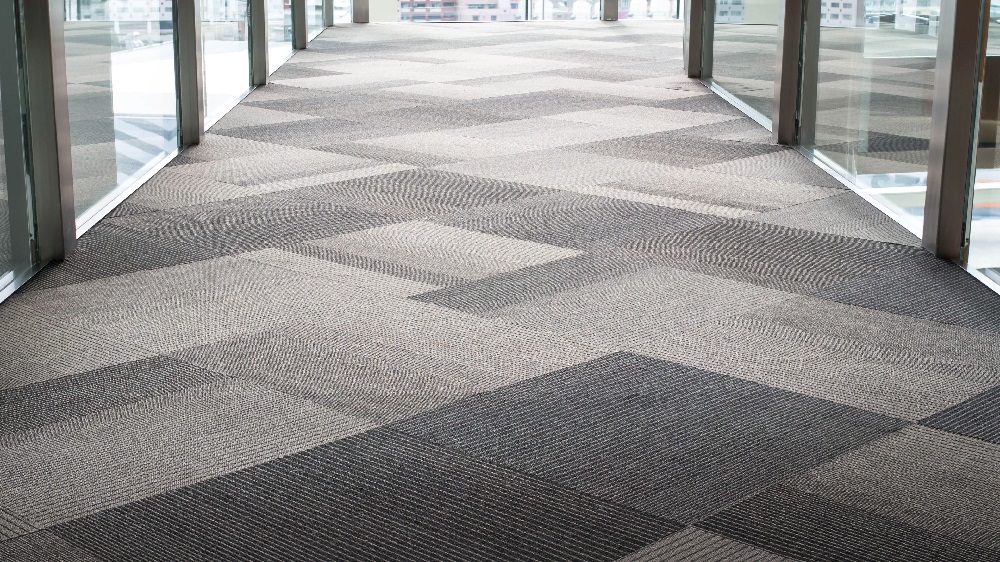Carpet tiles are not only practical and durable; they also offer endless creative possibilities for laying out unique and attractive floor designs. Whether in a home, office, or commercial space, the versatility of carpet tiles allows for customisation that can transform any area. Here’s how you can leverage this flexibility to create eye-catching and functional flooring.
Exploring Color and Pattern Combinations
The ability to mix and match different colors and patterns is one of the most significant advantages of carpet tiles. This feature can be particularly useful in defining different areas or zones within larger spaces.
Zonal Marking with Colors:
Use contrasting colors to delineate specific areas like seating areas, working zones, or walkways. This not only enhances the functionality of the space but also adds an element of visual interest.
Creating Patterns:
Lay tiles in alternating colors or orientations to create checks, stripes, or more complex geometric patterns. This can give the floor a dynamic appearance and can help mask seams where tiles meet.
Incorporating Textures
Carpet tiles come in various textures, which can add depth and tactile interest to your floor design.
Texture for Comfort and Practicality:
Choose softer, plusher tiles for comfort underfoot in areas like lounges or bedrooms, and opt for more robust, tightly looped tiles in high-traffic areas like hallways and commercial environments.
Mixing Textures:
Mix and match different textures to highlight pathways or borders organically. This not only elevates the design but also improves the functional mapping of the space.
Directional Laying for Visual Impact
The orientation of carpet tiles can significantly affect how a space is perceived. By playing with the directionality of the tiles, you can guide movement, alter perceptions of room dimensions, or highlight architectural features.
Linear Layouts:
Use lines of tiles in contrasting colours or textures to create pathways that lead the eye towards focal points like windows, displays, or seating areas.
Diagonal Designs:
Laying tiles diagonally can make rooms feel larger and add a sense of movement and energy to the space.
Creating Feature Areas
Carpet tiles allow for the creation of feature areas within a floor without the need for rugs or additional floor coverings.
Accent Squares:
Incorporate differently patterned or coloured tiles as accent squares at regular intervals or clustered in central locations to create a feature underfoot.
Borders and Rugs:
Frame areas or create the effect of a built-in rug with contrasting tile designs, enriching the aesthetic appeal and clearly defining different zones or areas within a room.
Conclusion
Carpet tiles not only offer practical benefits like durability and ease of maintenance but also open up a world of creative design possibilities. By experimenting with color, pattern, texture, and layout, you can customize your flooring to suit your style, meet your needs, and make your space stand out. The key is to think of your floor as a canvas, and carpet tiles as the paint — with some creativity, the possibilities are limitless.

